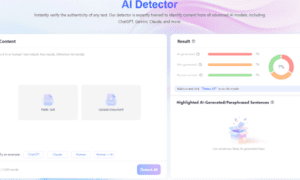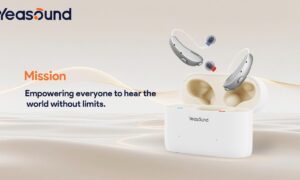
> Gazi Mohammad Moinul Haque
In today’s digitally driven world, healthcare is undergoing a profound transformation. The adoption of information technology (IT) in healthcare systems is not only optimizing operations but also enhancing patient care, improving clinical outcomes, and reducing costs. At the core of this transformation lie two key technological advances: data integration and predictive analytics. These tools are redefining the way healthcare professionals diagnose, treat, and monitor patients, ushering in a new era of proactive, personalized care.
Understanding Data Integration in Healthcare
Data integration in healthcare refers to the process of combining data from multiple sources—electronic health records (EHRs), lab results, wearable devices, billing systems, and more—into a unified, accessible platform. Historically, health data has been fragmented across various departments and organizations. This siloed data posed significant challenges to patient care and hindered research, leading to inefficiencies and missed opportunities.
With the help of advanced IT solutions, healthcare providers are now able to create interconnected ecosystems where all patient data is centralized and readily available. This holistic view of a patient’s health history enables clinicians to make informed decisions, coordinate care more effectively, and avoid redundant tests and procedures.
For example, when a patient visits an emergency room, an integrated system can provide immediate access to their previous diagnoses, allergies, medications, and imaging reports. This not only reduces the time to diagnosis but also enhances patient safety by minimizing the risk of adverse drug interactions or treatment errors.
The Role of Predictive Analytics in Proactive Care
Predictive analytics utilizes statistical algorithms and machine learning models to analyze historical data and forecast future outcomes. In healthcare, this capability is proving invaluable across multiple domains—from clinical decision-making and population health management to hospital operations and fraud detection.
One of the most powerful applications of predictive analytics is early disease detection. By analyzing patterns in patient data, such as changes in vital signs, lab results, and genetic information, predictive models can identify individuals at high risk for conditions like diabetes, heart disease, or cancer—often before symptoms appear. This proactive approach allows for timely interventions that can slow or even prevent disease progression.
In hospitals, predictive analytics is being used to anticipate patient readmissions, manage bed occupancy, and optimize staffing. By forecasting patient volume and acuity levels, administrators can ensure adequate resources are available, thereby improving both patient outcomes and operational efficiency.
Enhancing Patient Experience and Engagement
Today’s patients expect a more connected and personalized healthcare experience, similar to what they encounter in retail and banking sectors. Information technology empowers patients by giving them access to their own health records, appointment scheduling, telemedicine services, and health tracking apps.
Data integration enables a seamless flow of information between patients and providers. For instance, wearable devices that monitor heart rate, blood pressure, and activity levels can transmit real-time data to a healthcare provider’s system. If any anomaly is detected, the provider can contact the patient immediately, reducing the need for in-person visits and allowing for timely interventions.
Predictive analytics takes this a step further by providing tailored health recommendations based on individual data. For example, a patient with a family history of cardiovascular disease who shows declining physical activity and rising cholesterol levels may receive automated alerts suggesting dietary changes, increased exercise, or a follow-up with their physician.
Driving Efficiency and Reducing Costs
Healthcare costs are a global concern. Governments, insurers, and providers are under increasing pressure to deliver quality care while managing budgets. Information technology offers a powerful means to strike this balance.
By consolidating data through integration, healthcare organizations can streamline administrative processes, minimize duplication of tests, and reduce medical errors. Predictive analytics contributes by identifying patients who are likely to benefit from preventive measures or alternative therapies, thus avoiding costly emergency interventions.
Moreover, predictive models can detect billing anomalies and potential fraud, saving organizations millions annually. Insurers use predictive algorithms to assess risk, set premiums more accurately, and identify claims that may require further review.
Facilitating Research and Innovation
The integration of vast amounts of healthcare data is also revolutionizing medical research. Researchers can now access large datasets that span diverse populations, enabling them to identify trends, test hypotheses, and develop new treatments more rapidly and accurately.
Predictive analytics tools accelerate the pace of discovery by highlighting relationships between variables that may not be immediately obvious. For instance, they can uncover potential side effects of medications, identify genetic markers associated with disease, or predict patient response to certain therapies.
Such insights are vital for advancing personalized medicine, where treatments are tailored to an individual’s genetic profile, lifestyle, and environment. This shift not only improves patient outcomes but also enhances the efficiency of clinical trials and reduces the time to bring new drugs to market.
Overcoming Challenges in Implementation
Despite the enormous potential of data integration and predictive analytics, their adoption in healthcare is not without challenges. Data privacy and security remain paramount concerns. Healthcare data is highly sensitive, and breaches can have serious implications for both individuals and institutions. Ensuring compliance with regulations like HIPAA in the U.S. or GDPR in Europe is critical.
Interoperability is another significant hurdle. Many healthcare providers use legacy systems that are not designed to communicate with newer platforms. Achieving seamless integration requires significant investment in IT infrastructure, as well as collaboration among technology vendors, healthcare providers, and regulatory bodies.
Additionally, predictive analytics relies on high-quality, accurate data. Incomplete or incorrect records can skew results, leading to potentially harmful recommendations. Continuous validation and updating of algorithms are essential to maintain their effectiveness and reliability.
The Future of Healthcare IT: A Connected Ecosystem
Looking ahead, the future of healthcare lies in a fully connected ecosystem where data flows effortlessly between patients, providers, payers, and researchers. Emerging technologies such as artificial intelligence, blockchain, and Internet of Things (IoT) devices will play a critical role in this evolution.
Artificial intelligence will enhance predictive analytics by enabling more sophisticated models that can learn and adapt in real time. Blockchain can offer secure and tamper-proof data sharing, addressing many of the current privacy concerns. IoT devices will expand the range of data inputs, from smart inhalers and glucose monitors to ambient sensors in elderly care homes.
Furthermore, as healthcare systems around the world grapple with aging populations and chronic disease burdens, the demand for scalable, efficient, and patient-centric solutions will only grow. Information technology—particularly data integration and predictive analytics—will be at the heart of this transformation, empowering stakeholders to deliver care that is not just reactive but truly preventive and personalized.
Empowering a Healthier Tomorrow
The integration of information technology into healthcare is more than a technological shift; it represents a paradigm change in how we approach wellness, illness, and everything in between. By harnessing the power of data and predictive intelligence, healthcare providers can move beyond treating disease to anticipating and preventing it.
Patients, too, stand to benefit immensely from earlier diagnoses and more effective treatments to a more engaging and convenient healthcare experience. As the healthcare landscape continues to evolve, those who embrace IT-driven innovation will be best positioned to thrive in the digital age.
In conclusion, the synergy between data integration and predictive analytics is revolutionizing healthcare in profound ways. While challenges remain, the potential for improved outcomes, lower costs, and more personalized care makes it clear that the future of medicine is undeniably digital and incredibly promising.
Written By: Gazi Mohammad Moinul Haque


































